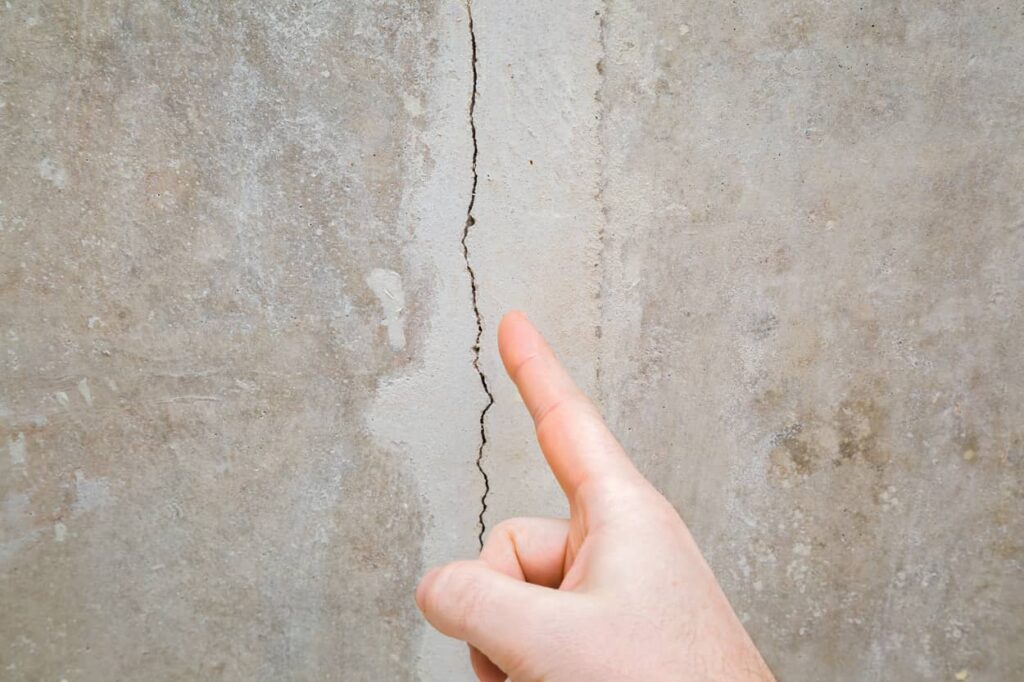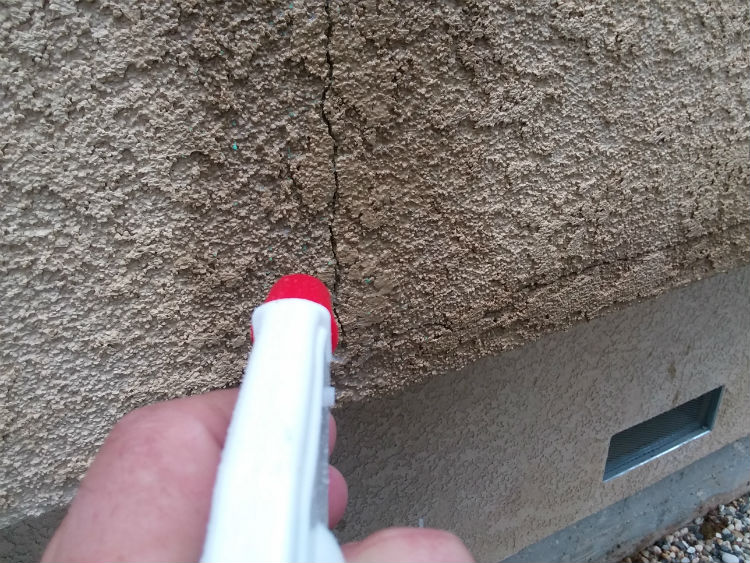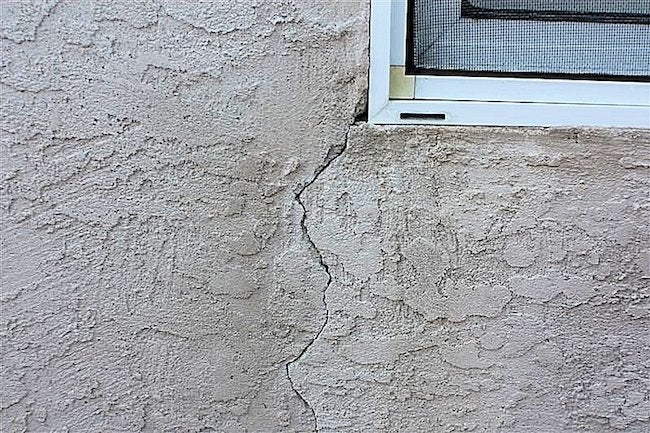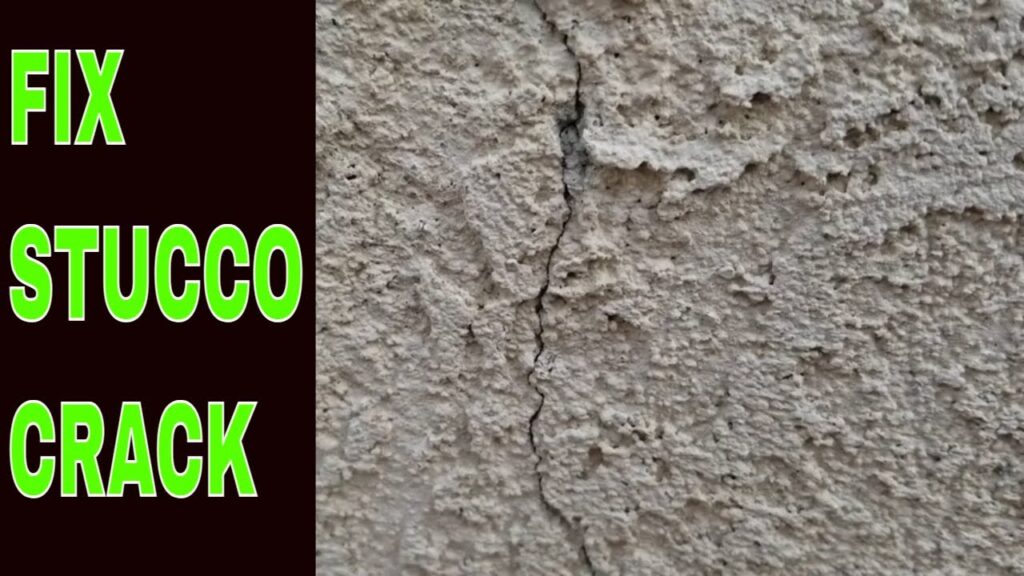Have you been noticing cracks in your stucco walls lately? Don’t worry! In this article, we will explore the world of stucco crack repair, providing you with all the information you need to know to tackle this issue head-on. Whether you are a homeowner or a professional contractor, understanding the causes of stucco cracks and learning the best techniques for repairing them is crucial. So, let’s jump right in and discover the secrets to restoring the beauty and integrity of your stucco walls!

Understanding Stucco Cracks
When it comes to maintaining the exterior of your home, one issue that you may encounter is stucco cracks. Stucco cracks can be unsightly, and if left unaddressed, they can lead to more serious problems. Understanding the different types of stucco cracks, as well as their causes and the importance of repair, is crucial in order to properly maintain your home.
Types of Stucco Cracks
Not all stucco cracks are the same. They can vary in size, width, and depth, which can provide insight into their underlying cause. Common types of stucco cracks include hairline cracks, which are thin and barely visible, and wide cracks that are more noticeable and can potentially compromise the integrity of the stucco. Other types of cracks include map cracks, which resemble a spider web pattern, and step cracks, which indicate structural movement and are typically found around windows and doors.
Causes of Stucco Cracks
Stucco cracks can be caused by a variety of factors. One common cause is normal settling of the home’s foundation, which can lead to minor cracks over time. Other causes include temperature changes, which can cause the stucco to expand and contract, as well as moisture infiltration, which can weaken the stucco and lead to cracks. Poor installation, improper mixing of materials, and lack of proper maintenance can also contribute to stucco cracks.
Importance of Stucco Crack Repair
While stucco cracks may seem like a minor issue, it is important to address them promptly. Ignoring stucco cracks can lead to more serious problems, such as water damage and mold growth. Water can seep into the cracks and penetrate the underlying structure, causing rot and deterioration. Additionally, the appearance of your home can be compromised by unsightly cracks. By repairing stucco cracks in a timely manner, you can prevent further damage and ensure the longevity and aesthetics of your home.
Preparing for Stucco Crack Repair
Before diving into the repair process, it is important to properly prepare for stucco crack repair. This involves taking safety precautions, gathering the necessary equipment and materials, and identifying the extent of the damage.
Safety Precautions
Prioritize safety when embarking on any home repair project, including stucco crack repair. Wear protective gear such as goggles, gloves, and a dust mask to protect yourself from any potential hazards. Additionally, ensure the area around the crack is clear of any obstacles and keep children and pets away from the work zone.
Equipment and Materials
To successfully repair stucco cracks, you will need a few essential tools and supplies. These typically include a wire brush or scraper for cleaning the crack, drill with a masonry bit for widening the crack (if necessary), a caulk gun or injection kit for applying the repair material, and the appropriate stucco repair product. The specific repair material will depend on the size and type of the crack, as well as the desired finish.
Identifying the Extent of Damage
Before beginning the repair process, it is important to assess the extent of the damage. Understanding whether the crack is purely cosmetic or if it indicates an underlying structural issue is crucial. Hairline cracks that do not penetrate the stucco fully typically require minimal repair, while wide and deep cracks may require professional intervention. By accurately identifying the extent of the damage, you can determine the best approach for repair.
DIY Stucco Crack Repair
For minor stucco cracks, you may choose to tackle the repair yourself. Following a step-by-step approach will help you achieve a successful repair outcome.
Assessing the Repairability
Not all stucco cracks are suitable for DIY repair. Assess the crack to determine if it falls within the realm of a manageable DIY project. Factors to consider include the size, width, and depth of the crack, as well as any signs of structural movement. If the crack is too extensive or indicates significant structural issues, it is best to consult with a professional.
Surface Preparation
Proper surface preparation is crucial for a long-lasting stucco crack repair. Begin by cleaning the crack and the surrounding area using a wire brush or scraper to remove any loose debris or old caulk. It is important to create a clean and stable base for the repair material to adhere to.
Choosing the Right Repair Technique
There are multiple techniques that can be used for stucco crack repair, each suited for different types of cracks and finishes. Some common DIY repair techniques include crack stitching, stucco patching, and applying stucco sealant. Research and select the technique that best suits the specific crack and desired outcome.
Professional Stucco Crack Repair
For larger or more complex stucco cracks, it is often best to enlist the help of a licensed contractor. A professional will have the expertise and experience to tackle the repair effectively and efficiently.
Hiring a Licensed Contractor
When choosing a contractor for your stucco crack repair, it is important to look for a licensed and reputable professional. Verify their credentials and ask for references or samples of their previous work. It is also advisable to obtain multiple quotes to ensure you are getting a fair price and to compare the suggested repair methods.
Estimating Repair Costs
Before hiring a professional, it is important to understand the potential costs associated with stucco crack repair. The cost will depend on factors such as the size and complexity of the crack, the repair technique used, and the contractor’s rates. Obtain detailed quotes from different contractors to compare prices and make an informed decision.
Choosing a Repair Method
Professional stucco crack repair may involve more advanced techniques and materials than DIY repairs. Contractors may use methods such as crack widening and repair, stucco panel removal and replacement, or structural stabilization. The chosen method will depend on the severity of the crack and the desired outcome.

Common Stucco Crack Repair Techniques
Regardless of whether you choose to repair the stucco cracks yourself or hire a professional, several common techniques are used to address stucco cracks effectively.
Crack Stitching
Crack stitching involves the use of metal staples or rods to stitch the crack together, effectively providing additional support and preventing further movement. This technique is particularly useful for wider and more severe cracks.
Stucco Patching
Stucco patching is a technique used to fill and smooth out minor cracks. A stucco patching compound is typically used to fill the crack and restore the surface to its original appearance. This technique is suitable for small hairline cracks and cosmetic repairs.
Applying Stucco Sealant
Stucco sealant is used to seal and protect cracks from water infiltration. It is typically applied using a caulk gun or injection system and forms a flexible barrier to prevent moisture and further damage. Stucco sealant is useful for both cosmetic and functional repairs.
Step-by-Step Guide to Stucco Crack Repair
For those undertaking DIY stucco crack repair, a step-by-step guide can help ensure a smooth and successful repair process.
Measuring and Marking the Crack
Start by measuring the length and width of the crack using a ruler or tape measure. Take note of the measurements as this will help determine the amount of repair material needed. Mark the boundaries of the crack using a pencil or masking tape to ensure precise application.
Drilling and Cleaning the Crack
If the crack is wider than 1/8 inch, it may be necessary to widen it for better repair material adhesion. Use a drill with a masonry bit to carefully widen the crack, ensuring not to create further damage. Once widened, clean the crack and the surrounding area using a wire brush or scraper to remove loose debris and old caulk.
Injecting or Applying the Repair Material
Depending on the chosen repair technique, inject or apply the repair material into the crack. Follow the manufacturer’s instructions for the specific repair material being used. Ensure the repair material is properly applied and smoothed out to match the surrounding stucco texture. Allow ample time for the repair material to dry and cure before applying any additional treatments or finishes.

Preventing Future Stucco Cracks
While repairing stucco cracks is important, taking steps to prevent future cracks is equally crucial. Here are some preventive measures you can take to maintain the integrity of your stucco.
Regular Inspection and Maintenance
Regularly inspect your stucco for any signs of cracks or damage. Address any minor cracks promptly to prevent them from worsening. Additionally, perform routine maintenance such as cleaning the stucco surface and ensuring proper drainage to prevent moisture buildup and subsequent cracks.
Improving Drainage
Improper drainage can contribute to stucco cracks by allowing water to accumulate and penetrate the stucco. Ensure that your gutters and downspouts are functioning properly and directing water away from your home’s foundation. Install proper grading to encourage water runoff and prevent it from pooling near the stucco.
Addressing Underlying Structural Issues
If you notice recurring stucco cracks or signs of structural movement, it is essential to address the underlying issues. Consult with a structural engineer or a licensed contractor to assess the stability of your home’s foundation and identify any structural issues that may be contributing to the stucco cracks. Addressing these issues can help prevent future cracks and more serious damage.
Dealing with Large or Severe Stucco Cracks
In some cases, stucco cracks may be too large or severe for basic repair techniques. When facing these challenges, additional measures may be necessary to restore the integrity of the stucco.
Crack Widening and Repair
For wide or severe cracks, crack widening and repair may be necessary. This technique involves widening the crack to create a stable base and then repairing it using appropriate stucco materials and techniques. Crack widening and repair should be performed by a professional to ensure the stability and longevity of the repair.
Stucco Panel Removal and Replacement
In cases where the stucco crack extends to an entire panel or section, it may be necessary to remove and replace the affected area. This method ensures a complete and seamless repair, matching the appearance of the surrounding stucco. Again, this is a task best left to the expertise of a professional.
Structural Stabilization
When stucco cracks are a result of underlying structural issues, such as foundation settling or movement, it may require additional measures to stabilize the structure. This can involve reinforcing the foundation, installing structural supports, or other measures to ensure the stability and prevent future cracks.

Common Mistakes to Avoid in Stucco Crack Repair
While stucco crack repair may seem straightforward, there are common mistakes that should be avoided to ensure a successful and long-lasting repair.
Using the Wrong Repair Material
Using the wrong repair material can lead to ineffective repairs and potential future damage. Ensure that you select the appropriate repair material based on the type and severity of the crack, as well as the desired finish. Consult with a professional or follow the manufacturer’s guidelines to ensure the best results.
Neglecting Proper Surface Preparation
Proper surface preparation is key to adhesion and the longevity of the repair. Neglecting to clean or widen the crack, or failing to remove loose debris, can hinder the effectiveness of the repair material. Take the time to properly prepare the surface to ensure a successful repair.
Ignoring the Underlying Cause
Repairing the stucco cracks without addressing the underlying cause can result in recurrent cracks and further damage. If the cracks are a symptom of underlying structural issues, it is important to identify and address those issues to prevent future cracks from occurring. Seek professional advice to ensure a comprehensive and effective repair.
Importance of Timely Stucco Crack Repair
Promptly addressing stucco cracks is paramount to maintaining the integrity and appearance of your home. Ignoring stucco cracks can have several negative consequences.
Preventing Water Damage
Stucco cracks can allow water to penetrate the underlying structure, leading to water damage, rot, and mold growth. By promptly repairing stucco cracks, you can prevent water infiltration and the subsequent damage it can cause.
Preserving the Home’s Appearance
Stucco cracks can be unsightly and can significantly detract from the overall appearance of your home. By repairing the cracks in a timely manner, you can restore the aesthetic appeal and preserve the value of your property.
Avoiding Increased Repair Costs
Ignoring stucco cracks can lead to more serious damage over time, resulting in higher repair costs. By addressing the cracks promptly, you can prevent further deterioration and avoid expensive repairs down the line.
In conclusion, stucco cracks are a common issue that can affect the appearance and integrity of your home. Understanding the different types of cracks, their causes, and the importance of repair is crucial in maintaining your home’s value and aesthetics. Whether you choose to tackle the repairs yourself or hire a professional, proper preparation and selection of repair techniques are essential for a successful outcome. By addressing stucco cracks in a timely manner, you can prevent further damage, preserve the home’s appearance, and avoid unnecessary repair costs.


